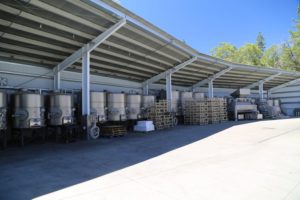
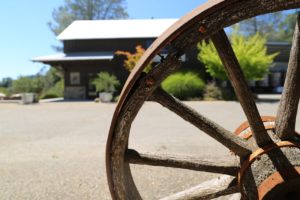
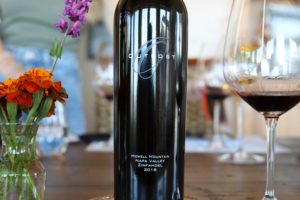 Outpost Winery is located on top of Summit Lake Drive at an elevation of 2200 feet – about 10 minutes outside of the small town of Angwin. This road should almost be called Zinfandel Drive as several other premium Zinfandel producers are located within minutes of Outpost off of this same road. This is in northern Napa Valley’s Howell Mountain appellation. As a result of the elevation the property is above the Napa Valley fog and generally experiences light snowfall in the winter – although in February 2022 up to 14 inches fell on Howell Mountain, blocking roads and causing a significant number of trees to fall.
Outpost Winery is located on top of Summit Lake Drive at an elevation of 2200 feet – about 10 minutes outside of the small town of Angwin. This road should almost be called Zinfandel Drive as several other premium Zinfandel producers are located within minutes of Outpost off of this same road. This is in northern Napa Valley’s Howell Mountain appellation. As a result of the elevation the property is above the Napa Valley fog and generally experiences light snowfall in the winter – although in February 2022 up to 14 inches fell on Howell Mountain, blocking roads and causing a significant number of trees to fall.
Outpost was founded in 1998 by Terry and Juli Pringle; their first wine was from that year, 400 cases of Zinfandel. This first vintage established what would become a long-term winemaker relationship with this site; Ehren Jordan (of Failla Wines) produced this first Outpost wine at Turley Wine Cellars where Thomas Rivers Brown was his assistant winemaker. Thomas has been associated with the Outpost wines since this first vintage.
During the Pringle ownership the current winery was built – designed by architect Howard Backen. The second owners – husband wife at the time, Kathy and Frank Dotzler purchased it in 2003. Frank is a native Chicagoan who ran a successful computer company that produced computer cases and cables and Kathy spent some time living in Belgium and Texas. They honeymooned in Napa Valley in 1997 having both shared a passion for wine.
Most couples on their honeymoon go someplace and then leave with fond memories; the Dotzler’s “put down roots” so to speak and purchased a twenty-acre site on Howell Mountain which they ultimately planted to vines and named True Vineyard. True Vineyard is nine acres planted entirely to Bordeaux varieties; these wines were released for the first time in 2008. Kathy told us about thinking “small” at the time – perhaps having a vineyard and land that they would use as a vacation home.
But they started meeting vintners and others in the wine industry and the “community” took them under their wing helping them decide what varieties to plant, finding a vineyard manager and a winemaker. Kathy and Frank started drawing up plans for a winery to be built on the True Vineyard but then realized at the time (in the early 2000s) it was cheaper to purchase an existing winery. As it turns out, the Outpost site was almost one of the True Vineyard’s neighbors.
They reached out to Jean Phillips (founder of Screaming Eagle) and Ren and Marilyn Harris (founders of Paradigm Winery). Ren was retired from real estate at the time and told the Dotzler’s he would only come out of retirement if the transaction would be an easy one and would involve one phone call, that of connecting the Dotzler’s with the sellers. Incidentally this was his 76th and final real estate transaction.
In July of 2018 the winery was sold to the third owners, France based AXA Millésimes – a company that owns wineries in Bordeaux, Burgundy, Portugal and Hungary. The sale included both the winery, the brand, all existing inventory and both planted and non-planted acreage on site as well as the nearby True Vineyard. AXA Millésimes’s vision for Outpost is a long term one which has included expanding their vineyard footprint and continuing to retain long time employees.
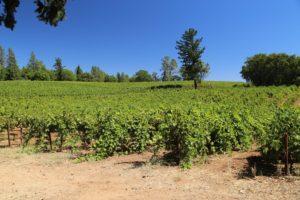
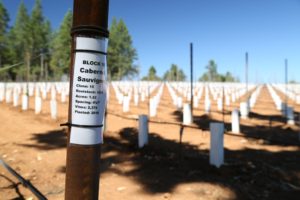 The name Outpost was derived over a random conversation over dinner Bouchon Restaurant in Yountville one night. As Terry and Juli Pringle began to walk out after dinner, their server wished them well on their drive back to their ‘outpost’. It would certainly be nice to track down and identify that particular server.
The name Outpost was derived over a random conversation over dinner Bouchon Restaurant in Yountville one night. As Terry and Juli Pringle began to walk out after dinner, their server wished them well on their drive back to their ‘outpost’. It would certainly be nice to track down and identify that particular server.
From this ridge top location, the views are memorable; one can just make out a tiny part of Napa Valley floor far below. Outpost’s vineyards range in elevation from approximately 1,800 feet to 2,200 feet. Grapes were originally planted here in the 1880s; prior to the Pringle’s ownership, this property was owned by Bob Lamborn. He planted Zinfandel here in the 1970s and built a small garagiste type winery. In 1998 the Lamborns sold their property to the Pringles.
Winemaker Thomas Brown continues to oversee production of the Outpost Wines, but he also makes the wine for a number of other premium labels. And using the winery for select custom crush clients is another aspect of their operations.
Outpost is primarily known for their organically farmed Zinfandel and Cabernet Sauvignon on the 42-acre estate (28 acres are planted to grapevines). Nearly all their wines are 100% varietal. Howell Mountain is a noted Zinfandel growing region in Napa Valley and a number of small ‘neighboring’ wineries also produce wines from this variety. Contributing to concentrated and rich wines are the property’s high elevation and its rocky and iron-rich soils. Because of the elevation and exposure, harvest dates are typically very late in the season – often into early November. To provide some perspective on this, during our first visit to the property, much of their Zinfandel was still completely green whereas the Zinfandel we saw on the valley floor had already well passed through veraison.
Several years after AXA Millésimes purchased Outpost, they acquired the Henry Brothers’ Ranch (a short drive from the winery). This site is located high on the red soil slopes of Howell Mountain (with an uppermost elevation of just under 2,000 feet). This property is 36 acres of which 18 are planted to vines. It was previously owned by the Henry family; brothers Ric and Bryan Henry’s parents purchased this land in 1975 for $150,000; at the time it was forested along with manzanita and as Ric recalls a small prune orchard. Over the years, Bryan and his two sons developed the vineyard site and grew nearly all red varieties including mostly Cabernet Sauvignon with a tiny block of Petite Sirah and a 1/4 acre of Sauvignon Blanc (the only white varietal that grew on site). The grapes were highly sought after with a number of mostly smaller producers purchasing fruit each year.
After the sale of the vineyard to AXA Millésimes grapes from the 2021 vintage were produced and then the vineyard was completely replanted by mid 2022, overseen by Matt Hardin and Josh Clark of Hardin Clark Vineyard Management (now known as Hardin Vineyard Management). The site was replanted to primarily Cabernet Sauvignon but also with smaller blocks of Merlot and Cabernet Franc.
Select Wines
Chardonnay
Outpost has sourced grapes for their Chardonnay from several vineyard sources over the years since no Chardonnay is planted on their Howell Mountain properties.
The 2018 Outpost La Blonde Chardonnay was sourced from Riddle and Lucky Well vineyards near the town of Occidental in west Sonoma County. This wine was fermented and aged in barrel. It is medium to deep gold in color; the aromatics are expressive, warm and inviting and include popcorn butter, caramel, vanilla, melon, honeysuckle, honeycomb and a nuance of lightly toasted oak. As the aromatics evolve, the bouquet offers some riper fruit notes including of apricot and yellow peach. Its texture is immediately attractive with a creamy and supple feel across the palate. This wine shows plenty of depth and richness of flavor but also a simultaneous freshness. Flavors include pineapple, mandarin and melon and it finishes with some stone fruit nuances.
Zinfandel
The 2018 Outpost Zinfandel is dark ruby and almost opaque in the glass: this bottling smells like the variety with a union of sweeter fruits, darker spices including pepper, clove and old cedar box. The spices on the bouquet continue onto the palate along with flavors of red plum, blackberry and blueberry. The tannins are nicely integrated, dusty and linger with a persistent brightness of acidity. Jammy, overripe? Not this bottling.
Cabernet Sauvignon
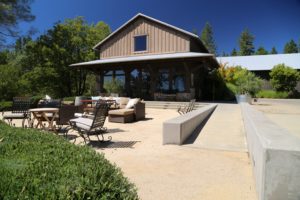
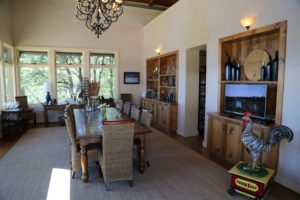
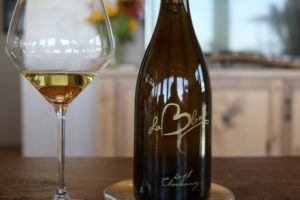 The Outpost Cabernet Sauvignon typically spends 3-5 days cold soaking before being allowed to begin fermentation and is often put into barrel with a slight residual sugar left to finish its fermentation. Aging is in French oak barrels, of which typically 70% to 80% are new.
The Outpost Cabernet Sauvignon typically spends 3-5 days cold soaking before being allowed to begin fermentation and is often put into barrel with a slight residual sugar left to finish its fermentation. Aging is in French oak barrels, of which typically 70% to 80% are new.
The 2019 Outpost Cabernet Sauvignon is dark ruby in color with purplish tinges on the rim of the glass; this is a powerful yet restrained bottling that is highly energetic in its youth (we tasted 3 years post vintage). The bouquet is elegant, attractive and diverse showing scents of violets, dried herbs including sage, a fruit sweetness and old cedar box. Found deeper in the aromatics are notes of clove and some other darker dessert spices. This wine is lively across the palate, mouthwatering and juicy with flavors of blackberry and dark plums. The texture of the tannins is somewhat gravelly. This is a big but already balanced wine with lots of life ahead of it.
The 2018 Outpost Cabernet Sauvignon is dark ruby in color and almost opaque; it shows slightly riper than the 2017 vintage both on the bouquet and the palate. The bouquet offers a pleasing union of both primary and secondary aromatics including blackberry and boysenberry along with saddle leather and a hint of tobacco spice. As the wine opens further additional aromas of mocha and dark chocolate are revealed. We love the density of everything about this wine including its depth of flavor and chalky textural profile.
The 2017 Outpost Cabernet Sauvignon. This was a warm year on Howell Mountain and the resulting grapes were harvested slightly earlier than normal. This wine is dark ruby in color; the aromatics show notes of dust, leather, old cedar box, dried fruits and ripe blackberry. The bouquet also shows a slight savory component. A liveliness is especially evident on this vintage with a vibrant finish anchored by gravelly, dusty and still pronounced tannins along with a hint of lingering tobacco and dark pepper spice. This wine has plenty of life ahead of it (we tasted 5 years post vintage).
Outpost makes an exceptional and rare Napa Valley grown Grenache. The origins of this variety on the property are with Thomas Brown who initially encouraged its planting. The Outpost Grenache is produced in extremely small quantities and is coveted by a loyal following.
And what was unfortunately a common story in Napa Valley in 2020, Outpost like many other wineries in the region did not produce wines from this vintage due to the proximity and heavy smoke resulting from the Glass Fire.
Outpost also produces Gentry Wines; the inaugural vintage was in 2019, a bottling of 100% varietal Howell Mountain Cabernet Sauvignon.
—
Because of their somewhat remote location, an “outpost” if you will, and small hospitality team, a limited number of visitors are hosted daily for tastings. As a result, tastings are always very personal; a visit to Outpost is for serious wine enthusiasts. Several inside spaces are used for hosting visitors for tastings including one room containing a large wooden table in front of a sizable window overlooking some of their vineyards and hills below.
While Outpost retains some very select distribution including in New York, the majority of their wines are sold direct to consumer. Total production varies each year but is usually around 3,000 cases. In 2016 the decision was made to hold back a small number of wines each vintage creating a limited number of library wines. For more information about Outpost, to schedule a visit or to join their wine club, visit: www.outpostwines.com
Outpost Winery & Property
OTHER AXA MILLESIMES OWNED PROPERTIES
Platt Vineyard
In July 2022, AXA Millésimes purchased the 275-acre Platt Vineyard in Sonoma County near the small community of Freestone. The nearly 275 acre site is planted to nearly 40 acres of both Pinot Noir and Chardonnay; its grapes have been sold to a number of premium producers over the years including Amulet Estate, Fayard Wines and Ramey among others.
The winemaking team at Outpost will oversee all production from this vineyard. And eventually all the grapes from the property will be used in-house and its vineyard footprint will increase to around 50 acres. Plans call for developing a winery on site. We will keep a close eye on the progress here and will update our notes and photography once we have more details.
Château Pichon-Baron, Bordeaux
This is one of the most visually impressive chateaus in Pauillac with its stunning architecture often attracting tour buses and other visitors who enjoy walking around its picturesque profile among the surrounding gardens. And this was our experience during our first visit while on a river cruise. We have later returned several times. Château Pichon-Baron is located on the left bank of the Gironde River about an hour drive from the center of Bordeaux.
Located in a coveted vineyard neighborhood, one of its close neighbors to the east is the First Growth, Château Latour. The estate was founded in 1694, the year that Baron Jacques Pichon de Longueville married Thérèse, the daughter of prominent wine merchant Pierre Desmezures de Rauzan. The estate was handed down to subsequent generations, remaining in the family. The neighboring chateau almost across the street, Pichon Longueville Comtesse de Lalande also has the word, ‘Pichon’ in its name. In fact, both chateaus used to be part of the same property until in 1850 their owner, Baron Joseph de Pichon Longueville split the land evenly among his five children. His two boys received what is now Pichon-Baron and his daughters received what is now Pichon Longueville Comtesse de Lalande.
The chateau dates from 1851. It is an impressive structure built to impress from the outside, but its interior is really small. As part of the Bordeaux Wine Official Classification of 1855, Château Pichon-Baron became a Second Grand Cru Classé. Heirs of Pichon de Longueville owned the property until 1933 when they sold to the Bouteiller family. This was the first winery property that AXA Millésimes purchased in 1987. Château Pichon-Baron is the AXA Millésimes headquarters for all of their international winery holdings.
Following their purchase, and led by led by AXA Millésimes president at the time, Claude Bebear, renovations of the chateau and a modernization of the estate began in 1988. A new cellar was completed in time for the 1991 harvest. A second underground cellar was later built, opening in 2007.
Production is focused on merely three wines from 75 hectares, all located in Pauillac separated into three main vineyards based on soil types (limestone + clay, alluvial and a conglomerate of sand + iron). And their three wines reflect these differences in terroir. They are the flagship Pichon-Baron from the estates’ most premium parcel (Butte de Pichon Baron) and two second bottlings: Les Tourelles de Longueville and Les Griffons de Pichon-Baron
The density of their vineyards is approximately 9,700 vines per hectare with and average age of 35 years per vine. The percentage of varieties planted is the following: 66% Cabernet-Sauvignon, 28% Merlot, 5% Cabernet Franc and 1% Petit Verdot. Soil health is a critical part of their vineyard operations; they utilize a cover crop among the vines and use grape pomace for fertilizer. And they have noticed a light correlation between cover crop causing a slightly lower pH in their wines. Several of the most significant pressures are from mildew and botrytis in varying degrees depending upon the vintage. Frost is generally rare. Wild boars can sometimes be a problem rooting around within the vineyards.
A team of more than 20 people oversee their vineyards full time. During harvest, the grapes are picked by hand by a team of approximately 80 people. And like in the vineyards, attention to detail is critical in the cellar. Once in the cellar the grapes are destemmed and also sorted using an optical sorter (since 2010). But that is not the only sorting taking place here; the same core of people every year also sort the grapes by hand. Prior to fermentation the grapes are generally left to cold soak for about 20 days. Production is setup so that the movement of wine is kept to a minimum. Stainless steel electric motor driven vats deliver the grapes via elevator and gravity to tanks below. Italian made amphora were introduced in 2017 for aging some of the wines (usually only for a few months) and in 2022 were used for the first time for a small amount of vinification.
Their own yeasts are selected, cultivated in a lab and then used for inoculation. The wines are generally racked every three to four months using candles to look for the cloudiness when reaching the bottom of the barrel. They are blended in wooden Taransaud vats after 8 months of barrel aging before returning to barrel for at least another 8 months of aging. Egg whites are used for fining. Two barrel rooms are within the winery, one for the most recent vintage and one for the previous year. A diversity of barrels from various coopers are used; spent barrels are sent to the AXA owned properties in Portugal. The second barrel room is located directly beneath the reflecting pool – a window allows one to look up from below its waters.
A library room contains some 14,000 bottles of older vintages; the oldest bottle in their collection is from 1881. This collection contains numerous magnums, some dating back to 1934. Every approximately 30 years, the oldest wines are re-corked and one of the bottles is sacrificed for topping purposes.
Tastings are by appointment and are hosted around a circular bar on the floor above the reception area. These typically include four wines including two vintages of Château Pichon-Baron and one bottling each of their second wines. The wines are well distributed and easily found through various online wine retailers.
Select wines
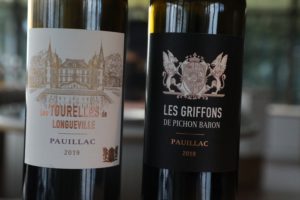 The 2017 Château Pichon-Baron is 79% Cabernet Sauvignon and 21% Merlot. This wine is deep ruby in color; the bouquet is elegant and sports aromas of cherry, blueberry, currant and dried herbs. Its focus is on its core fruit character rather than too much influence from secondary aromas. The nose becomes more sweetly fruited as it evolves in the glass. There is also a light note of coffee bean, dark chocolate and darker baking spices. Shining brightly, the palate offers a mouth watering freshness of red fruits plus lively acidity. It offers flavors of cherry, red berries and currant, lingering with a dried tobacco leaf nuance. This wine drinks very well in its youth and is already nicely balanced. The lightly grainy but overall rounded and resolved tannins showcase a chalky character which continues to persist on the finish. This wine was aged in 70% new French oak barrels.
The 2017 Château Pichon-Baron is 79% Cabernet Sauvignon and 21% Merlot. This wine is deep ruby in color; the bouquet is elegant and sports aromas of cherry, blueberry, currant and dried herbs. Its focus is on its core fruit character rather than too much influence from secondary aromas. The nose becomes more sweetly fruited as it evolves in the glass. There is also a light note of coffee bean, dark chocolate and darker baking spices. Shining brightly, the palate offers a mouth watering freshness of red fruits plus lively acidity. It offers flavors of cherry, red berries and currant, lingering with a dried tobacco leaf nuance. This wine drinks very well in its youth and is already nicely balanced. The lightly grainy but overall rounded and resolved tannins showcase a chalky character which continues to persist on the finish. This wine was aged in 70% new French oak barrels.
The 2016 Château Pichon-Baron reflects completely different vintage characteristics than the 2017 bottling and are best observed in a side by side tasting. This wine is 85% Cabernet Sauvignon and 15% Merlot. It is deep ruby and nearly opaque in the glass; the bouquet is savory and fresh showcasing scents of dried herbs, tobacco, an earthy/fresh tilled soil quality and darker fruits including plum and cherry. The palate features both balance and complexity with flavors of plum and complexity. The tannins are pronounced, firm and grainy, ultimately outpacing the fruit on the persistent finish. We tasted this bottling 7 years post vintage and it still shows as remarkably youthful. This wine was aged in 80% new French oak barrels. It will age well over the next 20+ years with the proper cellaring.
The 2017 Les Tourelles de Longueville is 55% Merlot, 27% Cabernet Sauvignon, 13% Cabernet Franc and 5% Petit Verdot. This wine is deep ruby; the bouquet needs time to open still (we tasted this 6 years post vintage). It offers aromas of plum, a hint of leather, a light note of pepper, some minerality nuances, graphite and a sweet tobacco spice. The palate shows more dark than red fruits including plum and cherry. The feathery tannins are fine grained and sport a velvety texture. This wine is very approachable in its youth.
The 2017 Les Griffons de Pichon-Baron is 52% Cabernet Sauvignon and 48% Merlot. This bottling is deep ruby in color; the bouquet offers a sweetness including of red licorice, raspberry and current with a hint of baking spices deep in the aromas. It is primarily red fruited on the palate with flavor of red cherry, plums and a lingering light note of tobacco spice. The tannins feature a chalky feel and a light dryness towards the back of the palate. The red-fruited finish lingers with flavors of currant and cranberry and a light drying character.
Exterior
Wines/Winemaking
Château Pibran, Bordeaux
This property was purchased in 1941 by Paul Pibran Billa who named the site using his middle name. AXA Millésimes purchased Château Piblan from the Billa family in 1989. The chateau and surrounding vineyard is located a less than 10 minute drive from Château Pichon-Baron. Standing outside the chateau one can look across a sea of vineyards at Chateau Pontet-Cantet with other very nearby chateau neighbors including Mouton-Rothschild and Lynch-Bages. This 9.5 hectare site is planted on alluvial well-drained gravel soils.
The wines for Château Pibran are produced at Château Pichon-Baron but then are brought back to Château Pibran for their aging.
Select wines
The 2020 Château Pibran is a blend of 55% Merlot and 45% Cabernet Sauvignon. This wine is deep ruby in color; the bouquet is elegant with a union of what we noted as ‘savory darkness’ and a freshness of its fruit. Scents include berries, mushroom, gaminess, an earthiness and a tobacco spice. These spice layers continue to persist as the wine further evolves in the glass. Balanced and bright across the palate it offers flavors of cherry, red plum, white pepper and a light note of cardamom spice. The tannins are felt as a gentle touch with a rounded and creamy texture. The finish lingers savory and bright with a light note of dried tobacco leaf. Already charming in its youth this wine’s sweet spot should be somewhere between 5 and 10 years but can go further. It wine was aged in 50% new French oak barrels. This wine over delivers for its price point.
Château Suduiraut, Sauternes
One of approximately 300 chateaus in Sauternes, Château Suduiraut owns 200 hectares of land of which 92 are planted to vines, some 90% Sémillon and 10% Sauvignon Blanc. The chateau is a Premier Cru Classé – dating back to the original Bordeaux Wine Classification of 1855. The property took its name in 1580 from its owner at the time, Léonard de Suduiraut and has changed hands several times over the years; AXA Millésimes purchased the estate in 1992.
The estate was destroyed during the Fronde insurrection of the 16th century and then rebuilt again in the 17th century. The estate was renamed to Cru du Roy in the 18th century by Jean Joseph Duroy. The picturesque chateau is surrounded by gardens originally designed by André Le Nôtre, a landscape architect best known for designing the park at the Palace of Versailles. Today the chateau is selectively rented out for conferences (often not wine related) but is also used for AXA Millésimes events.
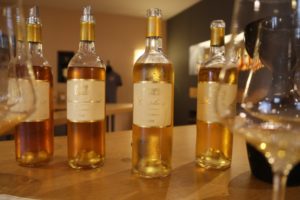 The vineyards are planted in rounded river washed sand and gravel that is 10-12 meters in depth before hitting a limestone layer. The oldest vines on the property date back to 1937. The vines are planted as high-density in the following varietal proportions: 80% Semillon, 15% Sauvignon Blanc and 5% Sauvignon Gris. The average vine age is around 35 years. The property is around 50 meters above sea level; their prominent next door neighbor Château d’Yquem is located only slighter higher in elevation.
The vineyards are planted in rounded river washed sand and gravel that is 10-12 meters in depth before hitting a limestone layer. The oldest vines on the property date back to 1937. The vines are planted as high-density in the following varietal proportions: 80% Semillon, 15% Sauvignon Blanc and 5% Sauvignon Gris. The average vine age is around 35 years. The property is around 50 meters above sea level; their prominent next door neighbor Château d’Yquem is located only slighter higher in elevation.
Grapes for their sweet wines are carefully harvested based on level of Botrytis cinera, the ‘noble rot’ (fungus) that grows on the grape skins under optimal conditions later in the season. Harvest generally runs from mid September through the middle of November with up to five picks each year. Often bunches will not be fully covered in Botrytis, therefore only certain grapes are selected by hand. And if grey rot forms (undesirable fungus) these grapes are cut off the vine and never used for making wine.
Primary fermentation is conducted in barrel – a previous winemaking team helped develop their own proprietary temperature control system for the barrels using two stainless steel rods, one metal rod hooks up to a water pipe system that was built alongside all of their barrels – and cool water is pumped into the rods helping regulate each barrels’ temperature during fermentation. No secondary fermentation is conducted on the sweet wines. Of approximately 1,000 barrels used each year (9 different coopers 19 different toast levels), approximately 25-30 percent are new French oak.
Today they produce three sweet wines and four dry wines. The flagship wine is named after the estate.
Select Wines
The 2000 Château Suduiraut mirrors the estate planting percentages and is a blend of 90% Sémillon and 10% Sauvignon Blanc. This wine shows more of an amber color than the younger vintages we tried with a diversity of aromatic depth including notes of candied pears, apricot, peach, marmalade, hard candy caramel and the smell of an orange peel zest reminiscent of the fine mist that often appears when one peels a fresh orange. This wine is superbly balanced across the palate between fruit, secondary flavors that have developed due to its age, sugar, acid and mouth feel. Supple in texture, but not overly dense or viscous – shows flavors of toffee, coffee, orange peel and baking spices along with brown sugar on the finish. The finish is persistent and continues to linger for some time. A beautiful showing where sweetness is tempered by excellent acidity – a hallmark of excellent wines of this style.
These types of these wines age remarkably well; the oldest vintage at the time of our visit in their private collection dates from 1885 while vintages dating from the 1970s can sometimes be found in distribution. All tastings at the estate can be arranged by appointment.
Visits are by appointment and are hosted in French, English and Italian. Several experiences are offered including a general tasting, a workshop aroma tasting focusing on identifying specific aromas found in Sauternes wines and a master class tasting.
Disznókó Tokaji
The first written mention of Disznókő Tokaji was in the year 1413. The name refers to either ‘rock of the wild boar’ a prominent volcanic rock sitting on a hill above the winery which roughly resembles the face of a boar or the shape of the hill in which the vineyards are planted on. In 1571 a still surviving document mentioned aszú grapes. Other important dates for the region include 1732, the year that viticulturist János Matolai introduced the world’s first quality based single vineyard classification. Over the centuries the exquisite wines from Tokaji have been enjoyed but numerous personalities including Peter the Great, Catherine the Great, Goethe, Voltaire and Schubert, among others.
Phylloxera devastated the region in the late 1800s with three primary varieties planted afterwards including: Furmint, Harslevelu and Sargamuskotaly. From 1945 until 1989 Hungary was under a one-party socialist state. After the fall of communism, foreign investors began to invest in the Tokaji region starting in the 1990s. AXA Millésimes purchased this winery in 1992. In 2002, Tokaji was granted UNESCO world heritage status.
The Disznókő Tokaji property is located about 2.5 hours driving from the center of Budapest and about a 15-20 minute drive from the town of Tokaj. The estate is 150 hectares of which 112 hectares are planted to grapevines ranging in elevation from 200 to 230 meters. The estate is one contiguous piece of property with the winery located on site – both attributes are rare in Tokaj. The oldest vines on the property date from the 1950s. Today the Disznókő Tokaj vineyards are planted to approximately 70% Furmint, 15% Hárslevelű, a thick skinned highly aromatic white variety, 14% Zéta (a cross from 1951 of Furmint and Bouvier) and 1% Sárgamuskotály, an early ripening variety, possibly originating in Greece and authorized for planting in the region in 1986. It also referred to as Yellow Muscat. All wines are grown and produced on the estate.
The oldest structure on the property is approximately 500 years old, an outpost building similar to a watchtower. The winery was completed in 1995, designed by the Hungarian architect Dezső Ekler. One of the floors is loosely modeled after a typical street in a Hungarian village.
The soils here are volcanic with both rhyolite and some clay influence. The tuff with its perlite composition radiates the sun but also absorbs water quite well. The Tokaji aszú wines made from grapes grown in the clay soils tend to show fruiter and fresh characteristics. Aszú is the Hungarian word that refers to grapes which are infected by the Botrytis cinerea fungus as well as the resulting wines made from these particular grapes.
The region remains somewhat humid in the autumn months helped in part by the convergence of two rivers, Bodrog and Tisza Rivers, conducive for the naturally occurring Botrytis (noble rot) to start accumulating on the outside of the grapes. Winters can be very cold, particularly January and March (-10 Celsius) with some snow generally falling in March. We heard the same conversation here that we hear at wineries around the world; temperatures are generally rising with more extreme weather events. Summers are warm with temperatures rising up to 37 Celsius during the day.
Harvest generally starts in mid to late August for the still wines and runs through November for the aszú wines. The vineyard workforce swells to approximately 150 workers during this time. As the grapes ripen, predation by birds can be an issue, complicated by the fact that all birds in the region are protected by law. So vineyards use a variety of methods including using ultra sound and other noises projected among the vines.
For Tokaji aszú, only botrytized grapes are picked by hand leaving non botrytised grapes hanging in the clusters. As a result, several passes are made through the vineyard to pick only the desired grapes. One worker generally only harvests between 5kg and 10kg of grapes each work day and place them in large baskets (puttony). These grapes are then added to base wine. A 5 puttonyos wine has at least 120 grams/liter of residual sugar while a 6 puttonyos has at least 150 grams/liter of residual sugar. 3 and 4 putanayos wines were eliminated from most aszú wines in 2013.
Disznókő Tokaji produces four styles of wines based on ripeness or Botrytis level of the grapes. These categories are: dry, Late harvest, Szamorodni and Aszú berries. Each stage results in slightly more dehydrated grapes at the time of harvest.
The aszú grapes are brought to the winery numerous times throughout harvest and stored in stainless steel vats. Based on their concentration of both sugars and acids they can be stored for several months prior to fermentation. Rather than do many micro-fermentations from the resulting picks, fermentations are conducted at one time at the end of harvest.
The rarest and most limited production bottling is the Eszencia with residual sugar ranging from between 600 grams/liter up to 900 grams/liter. The miniscule amount of viscous liquid for this wine is the result of the aszú pressing entirely under their own weight. The resulting thick and syrupy juice is racked off to begin its extended fermentation in glass demijohns, stored in temperatures fluctuating between 11 and 13 degrees Celsius. The resulting fermentation can take several years with final alcohol only 1% to 4%; so rich and viscous and limited, that Eszencia is are generally served in small spoons. This wine used to be sold only in Hungary in the 1970s and 1980s in local pharmacies and was treated like medicine with its high concentrations of penicillin.
Because the aszú grapes are so shriveled and raisin like, they are never directly pressed at this stage (that comes later). These grapes are soaked in a fermenting must (new wine) for 12 to 60 hours, helping extract sugars, flavor and acid. This ‘liquid’ is then pumped over or punched down to maximize extraction from the skins. After the raisins have soaked up the liquid from the fermenting must they are able to be pressed. This is a slow process lasting up to 7 hours. Once the juice has been pressed off, it is then fermented. After fermentation, individual lots are aged for up to two years in their cellar with temperatures ranging from 11 to 13 Celsius. The barrels are a combination of both French and Hungarian oak with up to 30% new barrels used. Blending these lots occurs approximately after 2.5 years of aging.
Total production of sweet wines is around 300,000 bottles each year.
Hospitality
Visits to the estate are by appointment and weather permitting generally include a walk among the vineyards up to the Filagória (lookout), followed by a tour of the winery. Visits can be conducted in one of four languages: English, French, German and Hungarian. Tastings occur in a 200 year old cave below the boutique in a dimly lit small room. Allow up to 90 minutes for the full experience.
Sárga Borház, translates to ‘Yellow Wine House’ is located a short walk from the reception. This is the only restaurant among the AXA Millésimes owned wineries. It features several indoor rooms, a bar and outdoor seating on the terrace, weather permitting. Our recommendation is the Hungarian specialty, the Mangalica (pork). And of course order a glass of your favorite Disznókő Tokaji.
On the second Sunday of every month from 10am until 3pm the Tokaj-Hegyalja Market is held on the grounds of Sárga Borház surrounding the restaurant. Vendors at this market sell a variety of items – primarily food provisions including cheese, meats, jams, honeys, vinegars, oils, fruits, vegetables, pottery, soap, wooden toys, jewelry and clothes. Live music is provided.
Select Wines
Dry
The 2023 Disznókő Tokaji Furmint (100% varietal) is pale straw in color; the bouquet smells refreshing with aromas of green apple, pear, white nectarine and white peach. Easy drinking, the palate offers flavors of green apple, kiwi and bosc pear and chalk. Clean finish. Refreshing. Balanced. This is a white wine you don’t need to think about, just enjoy. Balanced. Recommended for drinking during summer. 11-13% alcohol range from dry to sweet wines. It was aged on its fine lees in stainless steel vats for 3 months.
The 2022 Disznókő Tokaji is 80% Furmint and 20% Harslevelu. This wine is pale straw in color. The bouquet is highly aromatic with scents of star jasmine, beeswax, lanolin, lychee, guava and white nectarine. On the palate there are flavors of pomelo, grapefruit, green apple, crenshaw melon, guava and kiwi. It features a brightly lit acidity and a persistent mouth watering finish. Delicious. Balanced. This wine was aged in oak barrels for 6 months. Pair with raw oysters for best results.
Disznókő Tokaji also produces a sparkling rose and a sparkling furmint
Sweet
The 2020 Disznókő Tokaji, Kesoi Szuret Late Harvest is medium to deep gold in color; the bouquet offers an immediate honeyed character along with aromas of dried, apricot, canned peaches in light syrup and nectarines. On the palate there are flavors of apricot, ripe peaches, yellow nectarines and baked pears. The mouth feel is lightly viscous and creamy. The sugar seems to be pushing beyond the acidity at this stage and lingers with a persistent sweetness. This wine is 12.5% alcohol with 90g/residual sugar; this was aged in oak barrels for 8 months, primarily Hungarian oak. Recommended as an aperitif or pair with poultry or goat cheese.
The 2021 Disznókő Tokaji 1413 Edes Szamorodni (sweet as it is – Polish word); entire clusters including under ripe, ripe and over ripe grapes are harvested at one time. This wine is medium gold in color; the bouquet offers aromas of warm honey, canned peaches, apricot, dried peaches, lychee, and poached pear. On the palate there are flavors of apricot, peach, baked golden apples and ripe pineapple. Sweet, ripe and intense but a very important distinction is this wine is balanced nicely between its residual sugar and bright acidity. 140 grams per liter of residual sugar, acidity 7.6%/liter and pH is 3.25. This wine was aged for 12 months in oak barrels. Our host recommends pairing this wine with holidays; it goes especially well with goose or duck.
The 2014 Disznókő Tokaji 5 Putanayos is a blend of 69% Furmint, 25% Zeta and 10% Hárslevelű; this wine is deep golden in color. The bouquet is extremely honeyed along with additional aromas of canned peaches in syrup, dried apricots, dried walnuts, caramelized sugars including creme Brule, butterscotch and glazed pineapple. On the palate there are flavors of dried apricots and peaches, nectarines, honeycomb, baked pineapple and toasted almond. The richly flavored and intense finish lingers with both fruit and abundant acidity. Mouth watering. Multi faceted. At this age this wine shows additional layers both on the bouquet and the palate. The mouth feel is a hallmark character with a creamy, supply and satiny feel across the palate. Serve with cranberry sauce and roast turkey. Or blue cheese. This wine has 156 grams/liter of residual sugar with a pH of 3.40.
The 2016 Disznókő Tokaji 6 Putanayos is 100% varietal furmint; this wine is deep gold in color; the bouquet offers a strong aromas of honey along with dried nuts including hazelnut. It also offers aromas of apricot and ripe orchard fruits including peaches and nectarines; it rich across the palate in terms of both sugar, acid and flavor. On the palate there are flavors of apricot, peach, nectarine, creme Brulé, butter scotch and warm honey. This wine is exceptionally sweet but is mostly balanced by it’s bright acidity, especially noticeable on the finish. The mouth feel is satiny and features a rounded texture; it glides across the palate as smoothly as Kristi Yamaguchi skating across the ice. This wine has 177 grams/liter of sugar and is 12.5% alcohol.
The 2013 Disznókő Tokaji Eszencia is 100% Furmint. This wine is deep amber in color; the aromas smell like wild honey, caramel, apricot, peach, butterscotch, walnut and hazelnut. On the palate there are flavors of apricot, caramel, canned peaches, warm honey and caramelized sugars. This wine is highly sweet, rich and features an incredibly long finish filled with flavor, sugar and acidity. Its texture is oily and viscous but not heavy and that is a very important distinction. The mouth feel is ethereal. This wine will outlast us all. It is served in ‘angel cups’ – tiny portions from an exceptional and highly successful vintage. Wine critic James Suckling awarded this 100 points. It features 650 grams/liter of residual sugar.
Their sweet wines in particular pair well with a diversity of Asian cuisines including spicy dishes.
Domaine de l’Arlot, Côte de Nuits
In 1891 wine merchant Jules Belin purchased the property and enlarged its holdings through a number of vineyard purchases; a stone wall around the property had been built by prior owners. The property was still family owned (his heirs) until 1987 when it was sold to AXA Millésimes. At that time the property was renamed Domaine de l’Arlot after a small creek which flows out of the rock below their vineyard and then continues underground below the road. AXA Millésimes has since acquired additional premium vineyard holdings including in Vosne-Romanée for a total of 15 hectares (37 acres). All wines produced are from their own properties and the entirety of their production is bottled in their cellar.
The domaine is located merely a few minutes’ drive south of the center of Nuits-Saint-Georges; driving from Nuits-Saint-Georges look for the large sign on the right-hand side of the road a few minutes before reaching Domaine de l’Arlot. The impressive stone house on the property dates from the 1600s and was built from locally quarried rock.
In 2003 Domaine de l’Arlot began farming their vineyards biodynamically; today all their vines are farmed this way.
An old marble quarry is located directly behind the domaine; wandering through all the moss-covered stone statues in a maze-like setting, sculpted by numerous artists is almost like walking into a scene from Lord of the Rings. We will always fondly remember our visit here including exploring the exterior of the domaine on our own during remarkably nice November weather; this was our first ever Burgundy based wine tasting.
All red wines during a tasting at the winery were barrel samples of selected bottlings from the 2021 vintage. 2021 was a smaller than normal vintage due to severe frost early in the season which damaged buds. And this cold snap not only severely affected Burgundy, but other parts of France as well; we saw severe damage during our trip in April and May 2021 in parts of Provence and Bordeaux. As a result, Domaine de l’Arlot estimates they lost approximately 80% of their Chardonnay. And 2021 was not a ‘ripe’ vintage as the region experienced a fairly cold and rainy summer. The resulting direction in the cellar, led by Burgandy native winemaker Geraldine Godot (who we briefly met) was a softer approach to retain the elegant qualities of the vintage.
Most of the red wine samples we tried at their point of their maturation showed plenty of aromatic ‘funk spice’. Brooding would be a good descriptor to describe some of their aromatics. Due to circumstances, at the time of our visit we weren’t able to try any finished wines, but we hope to do so in the future and will add additional tasting notes here at that time.
Domaine de l’Arlot used to produce spirits; 2008 was their last vintage and was bottled in 2023.
Select Wines
The 2021 Domaine de l’Arlot Nuits-Saint-George 1er Cru Blanc was aged for 12 months in 20% new French oak and then spends several months in stainless steel before being bottled. This is a beautiful bottling; the first description we wrote in our notes was “purity of fruit” showing on the bouquet. This wine is medium gold in color; it offers aromas of honeysuckle and mineralities. The palate shows a pleasing rounded texture with flavors of red apple. It is bright and remarkably well-balanced and seamless in its youth from start to finish. This is a rare white wine produced by Domaine de l’Arlot as white grapes (Chardonnay and Pinot Gris) make up only several percent of their total vineyard holdings but are 50% of the total plantings surrounding the domaine. These grapes are planted directly behind the domaine.
The 2021 Domaine de l’Arlot Côte de Nuits-Villages sees a different percentage of whole cluster fermentation depending on the vintage; this year the grapes were entirely destemmed before fermentation. This wine spent 12 months aging in 30% new French oak barrels and then another 3 months in tank before being bottled. Its color is pale ruby; it offers aromatics of barnyard, sweaty baseball mitt lather, mushroom, white pepper and other darker spices. These aromatics are echoed on the palate along with fruit flavors of pomegranate and red cherry. It is juicy and fresh across the palate anchored by soft tannins and a lingering note of dried tobacco leaf on the finish.
The 2021 Domaine de l’Arlot Mont des Oiseaux is medium ruby in color; the aromatics offer nots of spicy raspberry (perhaps a little reductive at this stage) and white pepper. Unlike some of the other bottlings we tried, the bouquet is fairly expressive of the fruit rather than spice characteristics. The palate offers flavors of cherry and red plums; it is juicy with soft tannins anchoring the slightly spicy finish. This wine was aged in 35% new French oak barrels.
The 2021 Domaine de l’Arlot Nuits-Saint-Georges is pale to medium ruby in color; the bouquet offers aromas of white pepper, old leather, barnyard and a general brooding very noticeable dark character. The freshness of this particular vintage is clearly evident on the palate offering an intensity of flavor with complementary supple tannins and an invigorating lift of acidity. All components are nicely integrated for being so young.
The 2021 Domaine de l’Arlot Les Suchots Vosne-Romanée 1er Cru is medium ruby in color; the bouquet is dark including notes of white pepper and a tobacco spice with an herbal note that is reveals as the wine continues to evolve in the glass (hints of green pepper). Offers plenty of flavor and complexity on the palate including primarily red fruits. The refreshing and lively finish features well-rounded tannins.
The 2021 Domaine de l’Arlot Nuits-Saint-Georges Clos des Forêts 1er Cru has plenty of color; the aromatics are dark, including sweaty leather, mushroom, forest floor – damp and brooding. This wine is more texturally driven then some of the previous bottlings we sampled. present, noticeable but still rounded in their youth, they accompany a dark spice-filled finish with a lingering note of dried tobacco leaf.
The 2021 Domaine de l’Arlot Romanée-Saint-Vivant. As far as Pinot Noir vineyard neighborhoods go, one doesn’t get more ‘heavy hitting’ than this site. Nearby neighbors include Romanée Conti, La Tache and Les Richebourgs. The bouquet is spice and earth driven including aromatics of forest floor, damp leaves and barnyard/animal. The fruit aromatics are there, but are closed up, wound tightly and only time/oxygen in the glass helps reveal their core. The palate is layered, vibrant and offers plenty of mouth-watering freshness. The tannins are dark and light gravelly in their texture, lingering with a tartness of bright red fruits. We would love to come back to this wine in 5 and 10 years.
Quinta do Noval, Portugal
The Douro River begins in Spain and winds its way west, passing through the Douro Valley, (this region sometimes looks more like a canyon with its rugged and heavily terraced slopes) before emptying its waters in the Mediterranean Sea in Porto. Quinta do Noval was founded in 1715 in the Douro Valley above the Douro River about a 10-15 minute drive from the charming town of Pinhão. The winery was purchased in 1894 by António José da Silva, a Porto shipper and remained in the family for five generations. It was still family owned at the time Axa Millésimes purchased the winery in 1993.
The Douro Valley is separated into three sub regions: Baixo Corgo, Cima Corgo, and Douro Superior. Baixo Corgo is the coldest of the regions, high in altitude and features primarily granite based soils. Cima Corgo is composed of primarily schist soils and is known for its hot summers and cold winters. Douro Superior is the highest altitude sub region and also the hottest. While the Douro produces both dry and sparkling wines, it is it’s Ports that are the most known worldwide.
Quinta do Noval is 192 hectares ranging in elevation from 100 to 500 meters; after AXA Millésimes purchased the winery they subsequently replanted more than 50% of their total vineyards. Today the vineyard is planted to a diversity of varieties including Touriga Nacional, Touriga Franca, Tinta Roriz, Tinto Cão, and Sousão. And according to the Quinta classification of Port vineyards in the Douro region, the Quinta do Noval vineyard is rated the best, earning a grade of A on a scale from A through F.
While continuing to harvest and prune entirely by hand and use horse drawn ploughs for some of the farming, Swiss made tractors were introduced in the 1990s. The vineyards are planted on steep slopes including narrow stone wall terraces (socalcos) – all connected by stone steps, the wider patamares with curved stone walls and the upper vertically planted vinha ao alto. The stone terraces sometimes need to be repaired due to rain induced landslides. Schist rocks are creatively used as end posts in the vineyards; unlike wood, their durability is unquestionably superior.
The oldest vines on the property date from 1924 and are located in a small 1.6 hectare block a short distance up a hill from the old cellar. Only six terraces of vines are planted here. For reasons not yet identified, these vines are the only own-rooted (non grafted) vineyard in the Douro Valley that continues to survive phylloxera. This nearly microscopic soil louse was originally introduced to the region from America in the 1860s and 1870s. Even before 1924, vines in this small section of the vineyard had survived phylloxera. Whenever one of the old vines dies, a cutting is taken from a healthy vine within this block and is planted directly in the ground.
This tiny field blend vineyard produces grapes for their most coveted bottling, the Nacional Vintage Port. This rare and highly sought after bottling is not produced every year; its first vintage was in 1931. When it is declared, usually only 200-250 cases are produced.
The winery is unique among other major Douro Valley producers in that Quinta do Noval is a single property; most of large producers in the regions own multiple vineyards. In addition to grapes used from the property, grapes are also purchased from other growers, however wines bottled under the name Quinta do Noval are exclusively from grapes grown on their own estate.
The original cellar dates from the 1770s; it is used for fermenting and aging their premium port wines. Traditional granite ‘lagares’ are used for the several day fermentations. Groups of 10 people line up and slowly move across each lagare, foot-treading the grapes once a day. Their body heat helps induce fermentation. An automatic robot treading machine is also used during fermentation to complement the foot treading – with its ‘feet’ never quite reaching the floor of the lagare. Its parked at one end of the room when not in use. Once the fermentation reaches the desired alcohol percentage, the juice is drained out of the vats leaving the solid materials. The solids are then shoveled by hand out of each legare and pressed to be used for blending wine. The remaining pomace is either used for fertilizer or sold to a local distillery for making Grappa. It is interesting to note that Port houses in the Douro Valley are not allowed to produce their own distilled spirits.
A 77% alcohol spirit is added to the port which stops the fermentation (kills the yeast). Each port contains about 80% wine with 20% spirit. The resulting alcohol is permitted to be between 19% and 22% alcohol. Quinta do Noval uses spirits from France, Spain and Portugal.
Larger casks are used for ruby ports to help preserve both color and the ripe expression of the fruit while tawny ports are aged in pipa barrels containing a smaller volume exposed to more oxygen resulting in changes to the wine’s color, aromatics and flavors. A variety of different sized barrels are used in their production including some barrels over 100 years old. A local cooper is used to replace and or maintain barrels.
A second winery located on the lower slopes of the property dates the 1980s; this is used for producing their youngest ports. A state of the art three-story cellar was built nearby into the hill between 2020 and 2023 and is used for the production of their dry wines. Solar panels were added to the roof of this building in 2022.
This is the only winery in the AXA Millésimes portfolio producing olive oil, sourced from thousands of trees growing on 30 hectares. While there is an old olive press on the property this is no longer used; the olives are milled at a press located in the town of Vila Real.
And Managing Director of AXA Millésimes Christian Seely began his career with the company at Quinta do Noval. He is also the founder and director of Coates & Seeley, a winery making sparkling wine, located in Hampshire in southern England.
—
Guests of the winery will enter the unmarked 1km long driveway, eventually reaching a long section of cobblestone sheltered by draping vines trained along a wire trellis. Visits by appointment will typically start out on the terrace in the shade of an approximately 200 year old Lebanese cedar tree. A tour includes an overview of the history of the winery, weather permitting, a short walk to their oldest vineyard block and a walk-through and a detailed look at their cellar operations. The tour is followed by a sit down tasting within the old house, a blend of both Portuguese and French architectural styles and decor.
And Quinta do Noval operates two tasting rooms; one in Porto which opened in 1995 (one story) and is located along the banks of the Douro River and the other in Pinhão opened in 2020 (two story with a private tasting space and a collection of replica Nacional Port bottles upstairs). The space in Porto is surrounded by other major Port houses and is located along a very busy at times pedestrian corridor. Both tasting rooms offer a wide selection of wines including many older vintages. While they are not restaurants, small bites can be ordered to be paired with the wines at each location including an assortment of cheese and charcuterie.
Porto tasting room
Pinhão tasting room
Select Wines
Still
The 2023 Quinta do Noval Cedro do Noval Reserva is a blend of 65% Viosinho and 35% Gouveio. The batches were primarily fermented in stainless steel vats with 35% fermented in 225-litre French oak barrels, 20% of which was new oak. And the wine was aged in 65% stainless steel vats, 20% new barrels and 15% second-year barrels. This wine is straw color in the glass; the bouquet offers aromas of citrus including pomelo, white peach, white grapefruit and orange blossom. Refreshing across the palate, there are flavors of grapefruit, green apple, starfruit, cucumber infused water and a minerally component. The mouth feel is lightly fleshy with a rounded character. And the finish is brightly lit by its vibrant acidity.
The 2021 Quinta do Noval Douro Doc Reserve is 65% Touriga Nacional, 10% Touriga Francesa and 25% field blend from old vines. This wine was aged for 10 months in 225L French oak barrels (35% new barrels). The bouquet smells both ripely fruited and floral. These aromas include dark raspberry, mulberry, dark cherry and lilacs. The palate exhibits a simultaneous ripeness and freshness, but with freshness dominating (a result of a cooler year). There are flavors of dark cherry, blackberry, mulberry and Satsuma plum. This wine finishes dark and savory with notes of dried herbs including sage and a light astringent lingering character. The grainy tannins outpace the fruit on the finish. This wine can age 10-15 years but also drinks well in its youth.
Port
White
The Quinta do Noval Extra Dry White Port is a blend of Malvasia Fina, Gouveio, Rabigato and Códega with the average wine age 2 years. It was 90% aged in old wooden vats and 10% in stainless steel vats. This wine is deep gold in color; on the nose there are aromas of baked apples, beeswax, and dried apricots. The palate offers flavors of dried apricots, peaches and pear. It’s texture is an appealing attribute with a velvety and soft character. This is their driest port produced; it is an ideal apéritif.
Vintage
As required by law, Quinta do Noval sends samples to the Douro and Port Wine Institute; they are the governing board who decides if the samples are high enough quality to warrant bottling a vintage Port.
The 2018 Quinta do Noval Unfiltered, Single Vineyard, Late Bottled Vintage Port was aged 5 years in wooden oak casks. This wine is a blend of Touriga Nacional, Touriga Francesa, Tinta Roriz, Tinto Cão and Sousão. It is deep ruby and opaque; the bouquet smells pretty with aromas of cassis, cherry liqueur, black currants, raspberry and dark chocolate. On the palate there are rich flavors of ripe Santa Rosa plum, dark chocolate and five star spices. The oak is perfectly integrated with a lingering finish of both fruit and lightly grainy tannins. The body balances out the alcohol nicely. This wine drinks well in its youth but has the chutzpah to go at least another 15 years. For reference, we tasted this six years post vintage; it is one of their best quality to price point bottlings. A filtered version of this wine is also bottled, always sealed with a glass stopper.
The 2003 Quinta do Noval Vintage Port is deep ruby and opaque; the bouquet offers an attractive spiciness of oak, fruit and dried herbs. Tasting this wine 21 years post vintage, the fruit characteristics are still very well preserved. These scents include dark plum, blackberry and mulberry accompanied by dark chocolate, toffee and cinnamon stick. Intensely flavored but well balanced between alcohol and acidity, this wine has decades of life left. On the palate there are flavors of Graham cracker, dark chocolate, mulberry, blackberry, plum and cherry. This was a classical year with the majority of producers deciding to bottle a vintage Port.
The 1999 Quinta do Marco is ruby in color with a light browning 25 years post vintage at the time of our tasting. Sweetly fruited, the very ripe bouquet offers aromas of plum, cherry, dried blackberries, mulberry, milk chocolate, dried herbs, and five-star spices. The mouth feel is soft and supple. On the palate there are flavors of Graham cracker, cinnamon, anise, dried cherries, dried prunes and milk chocolate. We felt a warmth of alcohol on the finish. At this age, it shows plenty of sediment.
Tawny
The Quinta do Noval Ten Year Old Tawny Port was made with Touriga Nacional, Touriga Francesa, Tinto Cão, Sousão and Tinta Roriz. This wine was aged in 640L casks (cascos). It is medium ruby; the bouquet sports aromas of orange peel zest, blood orange, dried herbs, bitters and hazelnut. On the palate there are flavors of caramel, toffee, chocolate, Graham cracker and assorted caramelized sugars. And its fruit includes raspberry, cherry, plum and blackberry. Balanced but noticeably sweet. The mouth feel is soft with a supple character Lighter cheeses in particular pair well with tawny ports. Or with creme Brulé. Or go an entirely different direction and pair with a spicy Indian or Thai curry.
The Quinta do Noval Twenty Year Old Tawny Port was made with Touriga Nacional, Touriga Francesa, Tinto Cão, Sousão and Tinta Roriz. This wine is medium ruby in color; the bouquet is primarily dried fruit driven including aromas of currant, cranberry, raspberry, cherry, and apricots. But there are plenty of nutty characteristics including walnuts and toasted almonds. And additional notes of orange zest and dried herbs. On the palate, there are flavors of cinnamon stick, dried raspberries, orange zest, Graham cracker, chocolate and mocha. The acidity balances out the higher residual sugar. The mouth feel is supple and satin-like. We prefer the palate to the bouquet.
The Quinta do Noval Forty Year Old Tawny Port is brickish/brown light amber in color; the bouquet is as expected, tertiary at this age and leaning far on the oxidized spectrum rather than fruit with aromas of caramel, dried herbs, toffee, walnut liqueur, cinnamon stick and several nutty layers including toasted almond. On the palate there are flavors of molasses, caramel, dried apricot, toffee, orange peel zest and toasted walnut and almond. Perfectly balanced between flavor, sugar and acid. The mouth feel is lightly supple. Drinks easily. We wouldn’t mind pairing this with a cigar. The host who served us a sample of this at Quinto do Noval in Pinhão called this her meditative wine.
Total production is each year is roughly 65% Port and 35% dry wines.
Exterior
Interior
FORMERLY OWNED
Château Petit-Village NOTE: this winery was sold in 2020 to the owners of Château Beauregard, not long after we visited the property. We keep our notes here for historical reference. We have heard a number of updates have since been made to the cellar since our visit.
Located in Pomerol, almost straddling the border with Saint-Émilion this is some of France’s most exclusive vineyard neighborhoods. Nearby neighbors include Château Petrus and the tiny Château Le Pin. One can see the prominent Monolithic Church of St. Emilion in the distance through the vineyards. The winery sits at the highest part of the Pomerol plateau (35 to 38 meters above sea level) in approximately the center of the 10.5-hectare triangular shaped property. The vineyard is planted to 75% Merlot, 17% Cabernet Franc and 8% Cabernet Sauvignon. The size and shape of the property remarkably has not changed since 1705. Visually the soils are covered in tiny river washed gravel – but in their vineyard this typically only extends about a meter below the surface giving way to all clay.
The oldest vines on the property date from 1948 and 1950. Because of their spacing, horses are still used to manage these particular plots including plowing the soil and helping during harvest. The vineyard is High Environmental Value certified (HVE) certified, a system of certification overseen by the French Ministry of Agriculture – promoting organic farming. Château Petit-Village does not use any herbicides, insecticides or pesticides in their farming. Farming is done by hand – no tractors are used on site.
The winemaking is as meticulously handled as their farming – specific sized tanks were designed to correspond to each plot within the vineyard – grapes are picked section by section and fermented separately until final blending occurs. Pump overs are only conducted at the beginning and end of fermentation while the cap is punched down (pigeage) for most of the fermentation.
The focus of their winemaking is on two wines each year, the Grand vin Château Petit-Village, and a second wine, Le Jardin de Petit-Village. The Grand vin in particular are very impressive wines and typically are 75% Merlot with 25% Cabernet Sauvignon, although the percentages can vary year to year. During a visit we tasted through both current releases and older vintages – each vintage with its own defining character but all with a thread of intriguing fruit, balance and acidity that connects the vintages.
AXA Millésimes purchased the estate in 1989 and sold it in 2020. Incidentally the oldest bottle in their private collection from the property is from 1928. All tastings can be arranged by appointment.






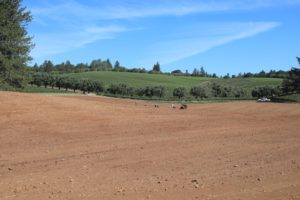
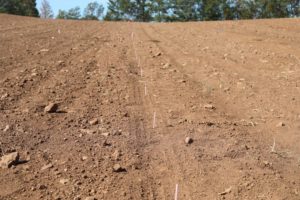
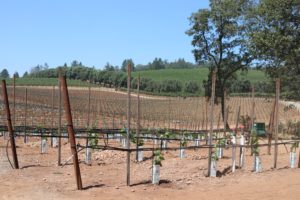
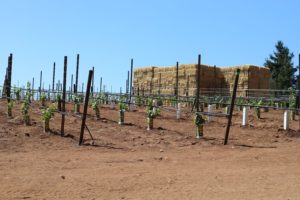
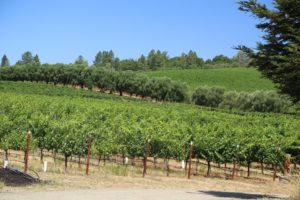
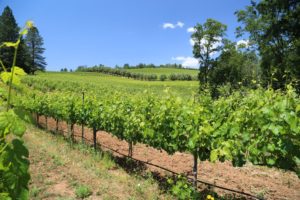
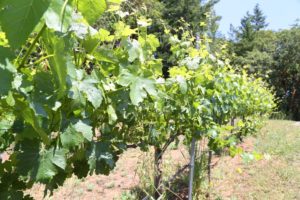
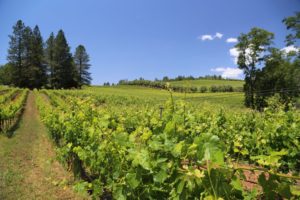
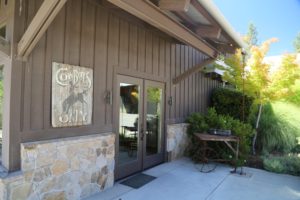
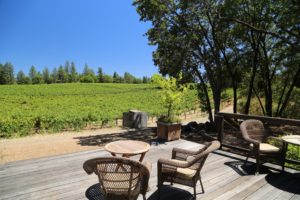
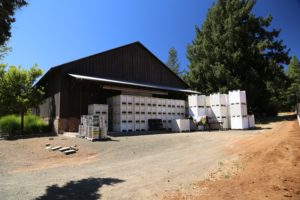
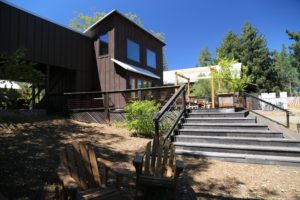


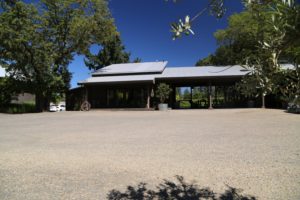
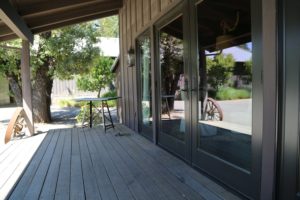
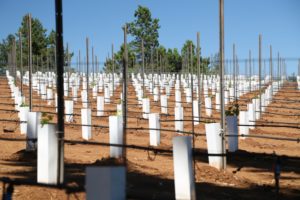


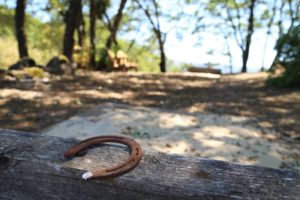
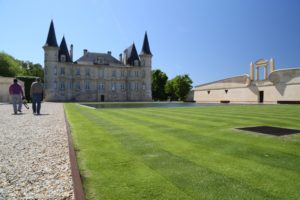
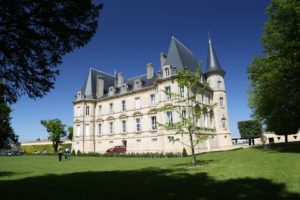


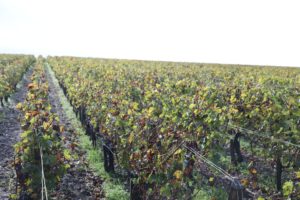

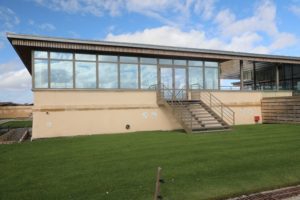
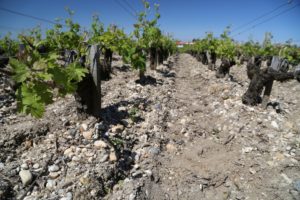
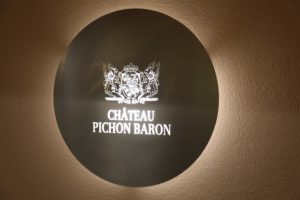
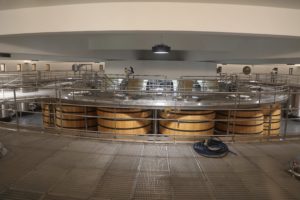
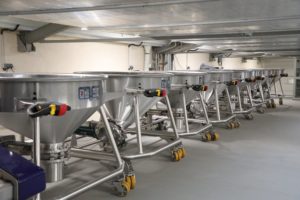
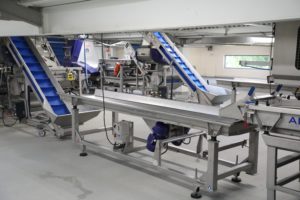
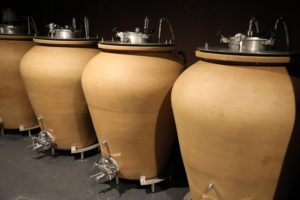

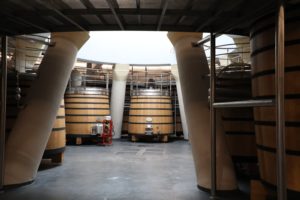
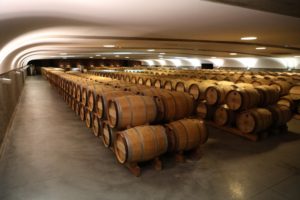
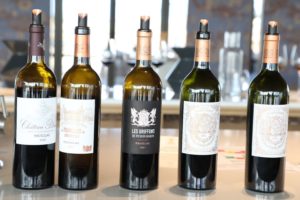
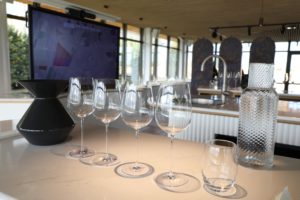
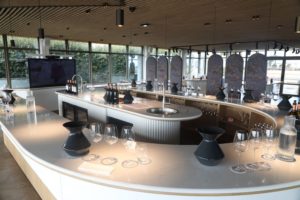
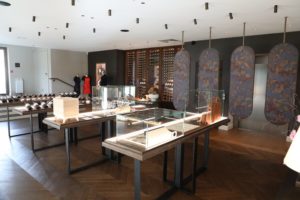
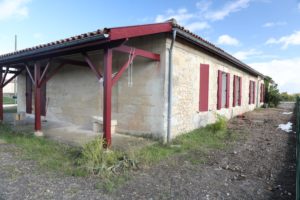
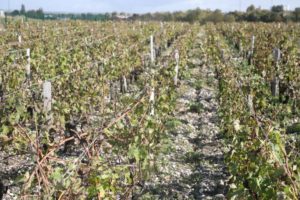
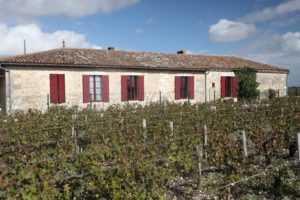
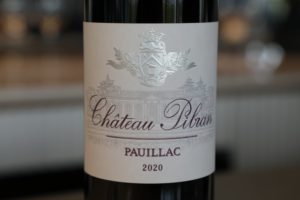
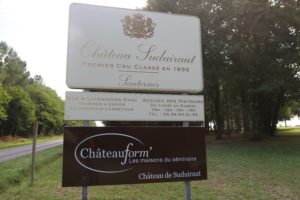
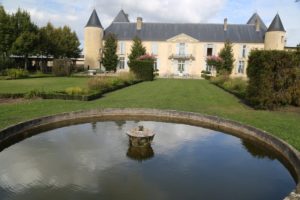
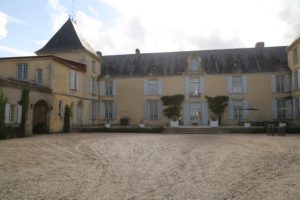

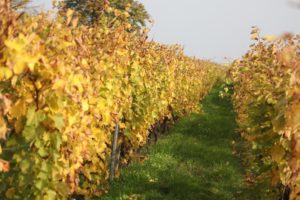
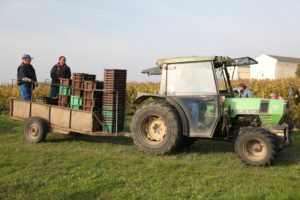
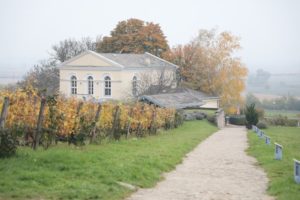

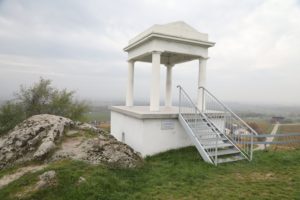
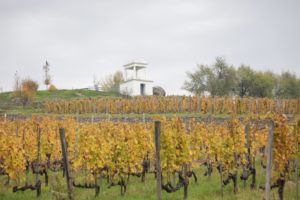

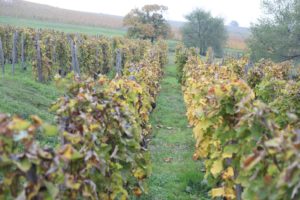
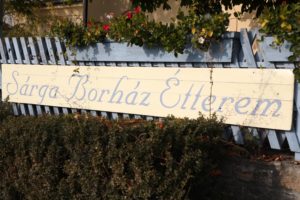
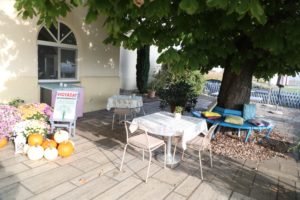
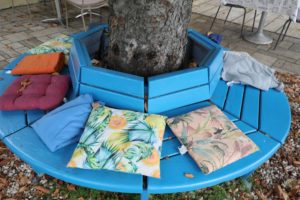

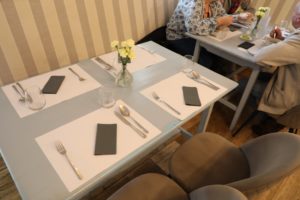
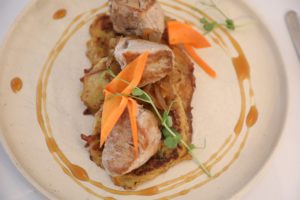

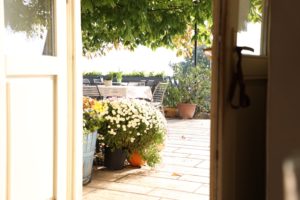

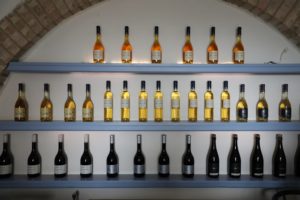

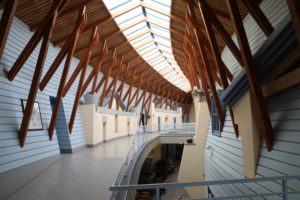
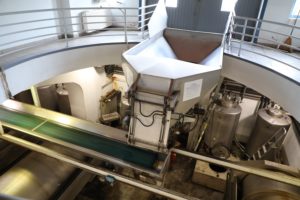
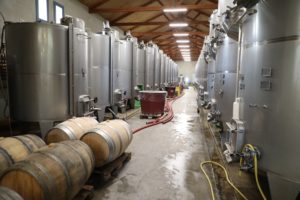

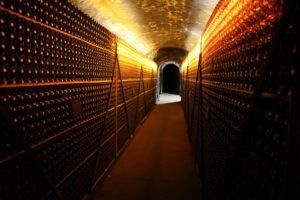

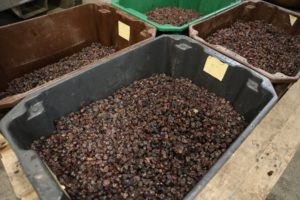
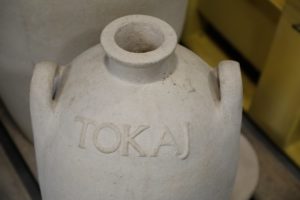

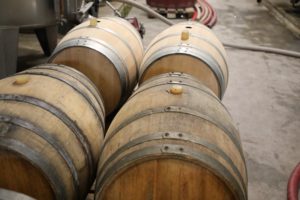
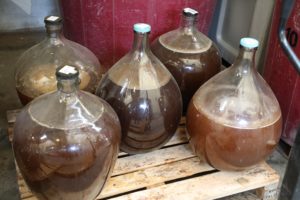


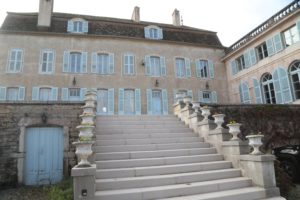
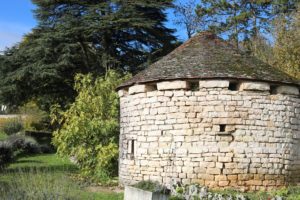
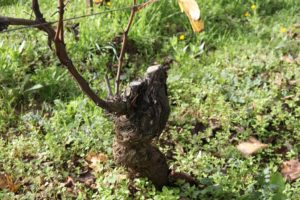
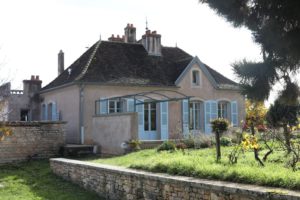
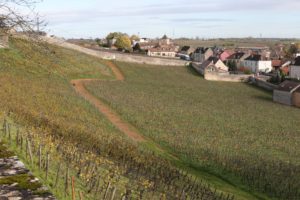
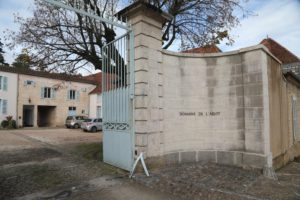
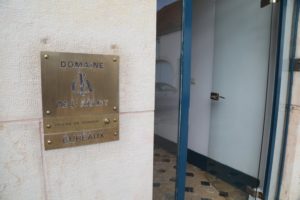
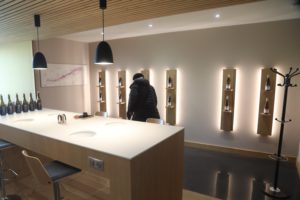
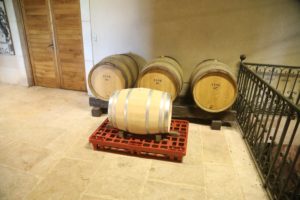

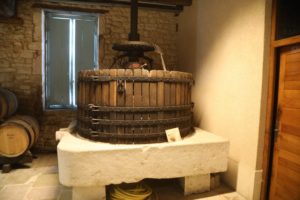
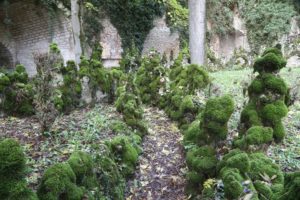
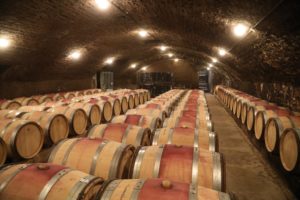
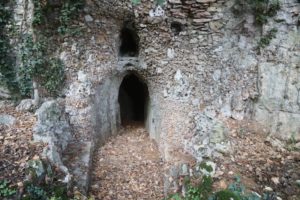
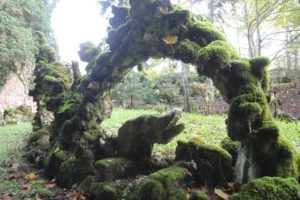
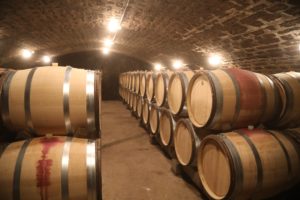
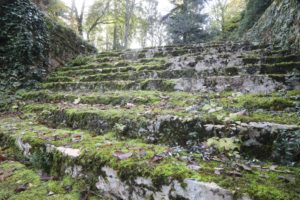
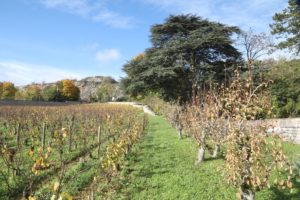
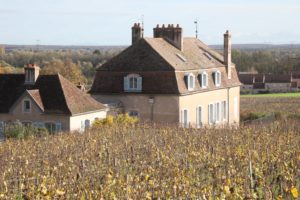
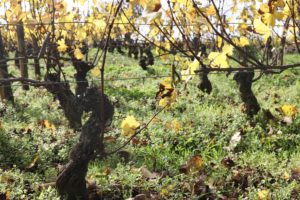
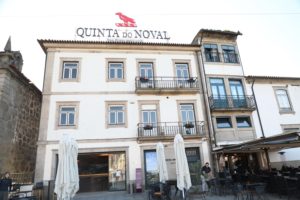






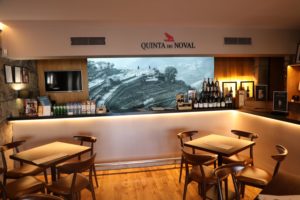
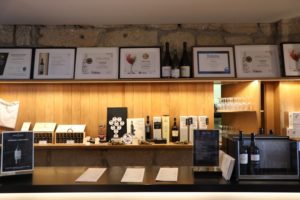
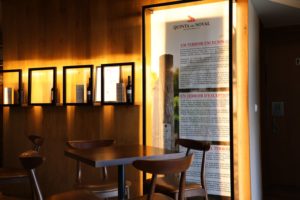
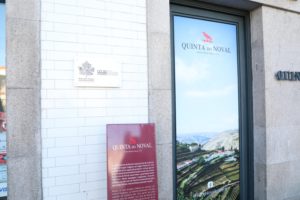
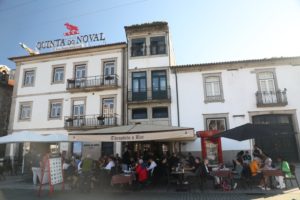
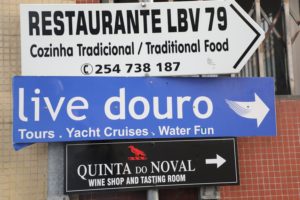

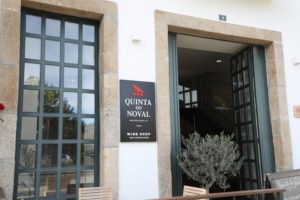


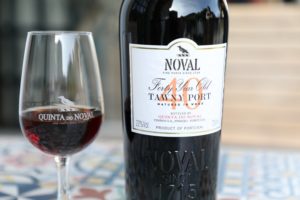

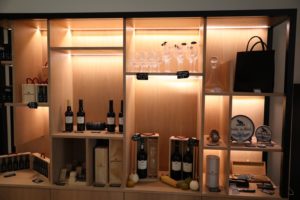

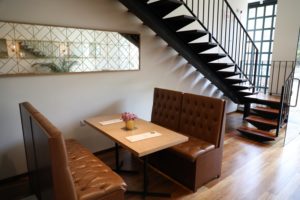
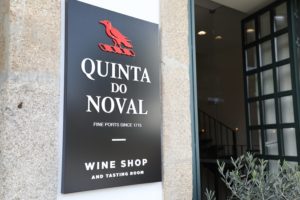
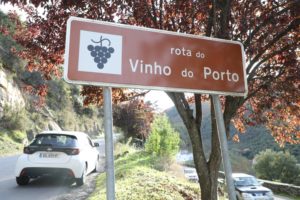

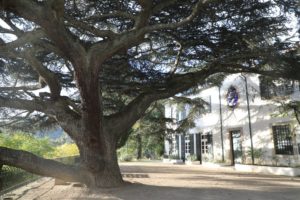

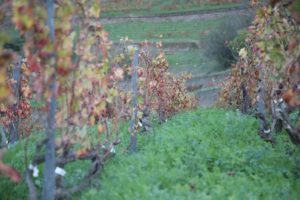

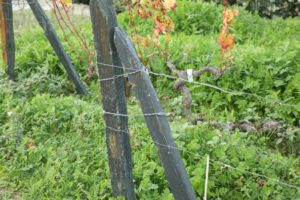


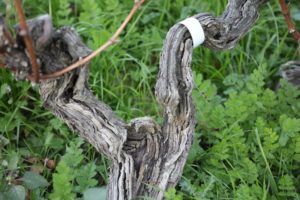
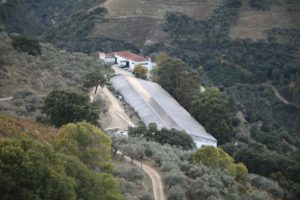
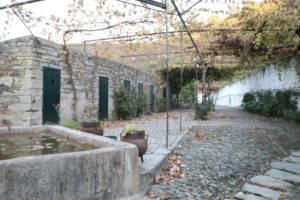
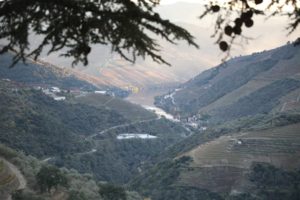
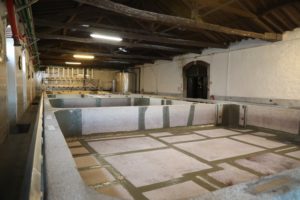
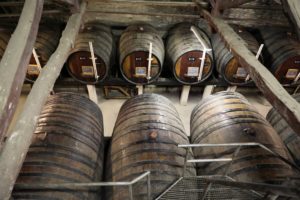
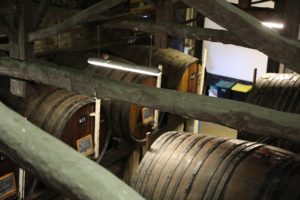
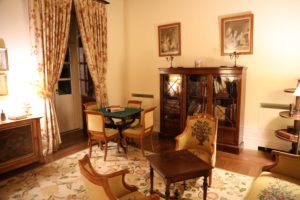
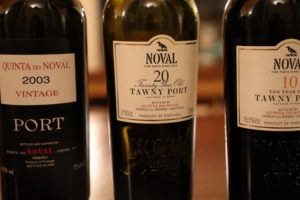
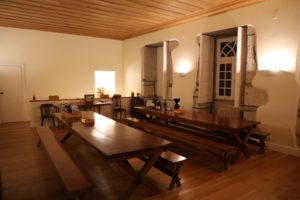
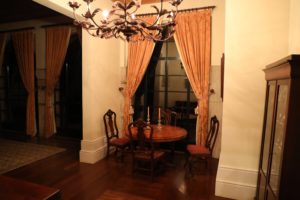
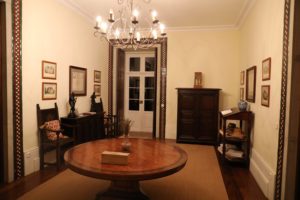
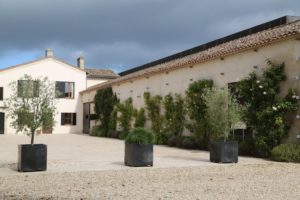
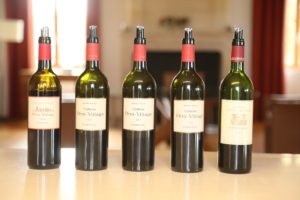
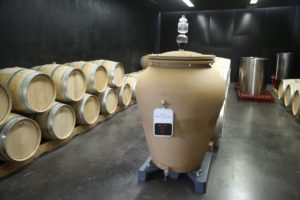
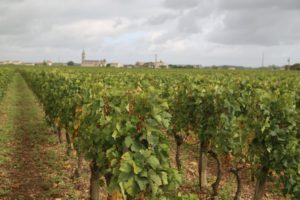
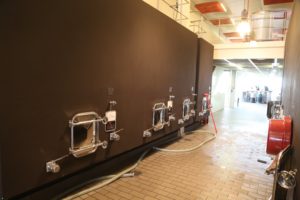
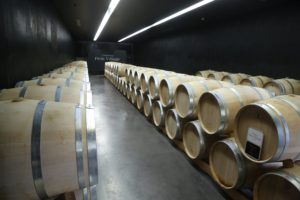
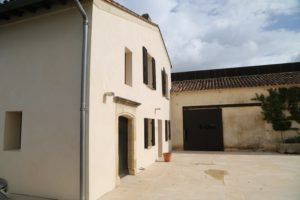
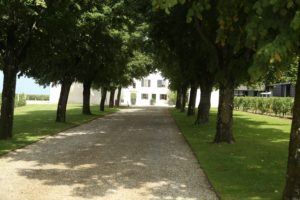
Leave a Reply